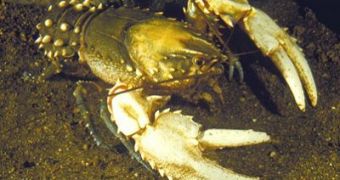Crayfish are found an all continents and adapted to diverse freshwater environments, but even if they resemble tiny lobsters, the freshwater decapods cannot survive in the saltwater of the sea, that's why biologists have been puzzled for 150 years by their wide range. Now, extremely old fossils explain this on their origin during the time when a sole continent was found: Pangaea.
"Crayfish body fossils and burrows discovered in Victoria, Australia, have provided the first physical evidence that crayfish existed on the continent as far back as the Mesozoic Era," said lead researcher Anthony Martin, a paleontologist at Emory University, whose team study has been published in the earth science journal "Gondwana Research."
"Studying the fossil burrows gives us a glimpse into the ecology of southern Australia about 115 million years ago, when the continent was still attached to Antarctica," said Martin, also an honorary research associate at Monash University, in Melbourne.
By those times, lush vegetation grew in the dinosaur populated Antarctica. That was a time when Earth experienced pronounced global warming, with an average temperature of 68? F (20? C) (10 degrees warmer than today).
The newfound fossils consist of an abdomen and two claws, and the burrows dug by the fossil crayfish are almost identical to those of modern crayfish in southeastern Australia.
"Comparing these fossil burrows to those made by modern crayfish in Australia shows us that their behavior hasn't changed that much," said Martin, a specialist in trace fossils.
This type of finding sustains the theory of the plate tectonics and represents a further proof of the existence of the unique continent Pangaea. Another recent DNA study had pointed that all Southern Hemisphere crayfish could have originated in southeastern Australia.
"The evolution of Southern Hemisphere crayfish has challenged researchers since the 1870s. Only now, 140 years later, are we starting to put together the physical evidence for this evolution through the discovery of fossils," said Martin.

 14 DAY TRIAL //
14 DAY TRIAL //